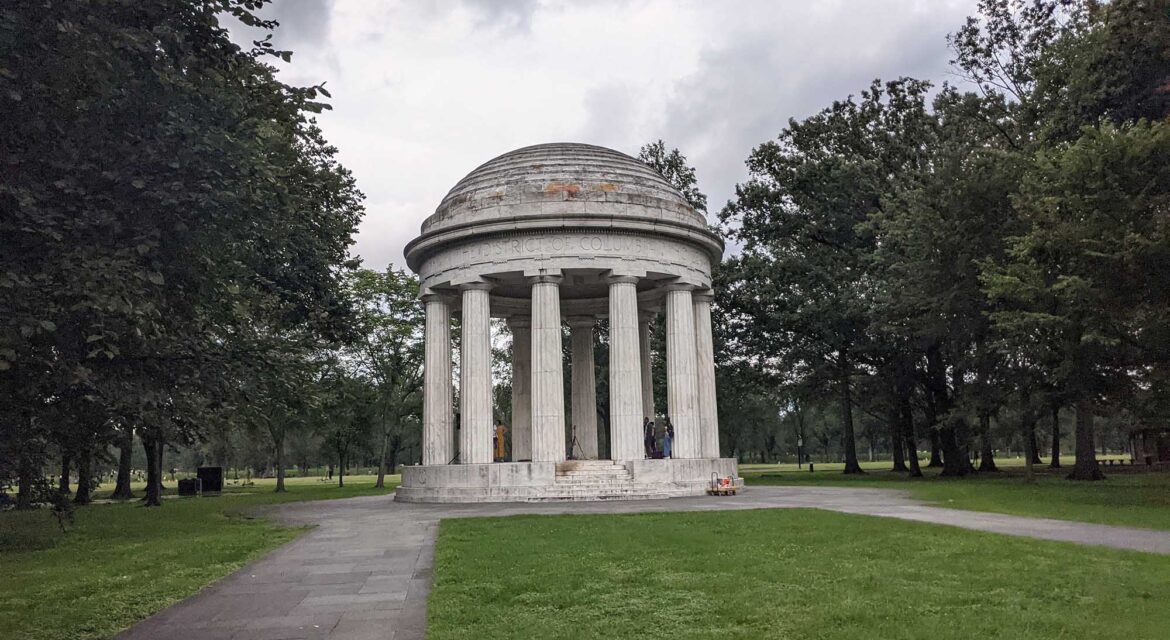 The names of the men and women from the District of Columbia who gave their lives in World War I have been inscribed across the D.C. War Memorial in Washington D.C. Constructed as a domed temple that creates space for organized and impromptu events, it celebrates the legacy of the community while also being an active part of it.
The names of the men and women from the District of Columbia who gave their lives in World War I have been inscribed across the D.C. War Memorial in Washington D.C. Constructed as a domed temple that creates space for organized and impromptu events, it celebrates the legacy of the community while also being an active part of it.

Dedicated to Residents Who Died in Service During World War I
 Alphabetically inscribed with the names of 499 Washington residents who died in service during World War I, the D.C. War Memorial gives no distinction to rank, race, or gender of the people who made the ultimate sacrifice. Completed in 1931 and dedicated in that same year by President Herbert Hoover, the cornerstone contains a list of the more than 26,000 Washingtonians who served in the Great War.
Alphabetically inscribed with the names of 499 Washington residents who died in service during World War I, the D.C. War Memorial gives no distinction to rank, race, or gender of the people who made the ultimate sacrifice. Completed in 1931 and dedicated in that same year by President Herbert Hoover, the cornerstone contains a list of the more than 26,000 Washingtonians who served in the Great War.
The 2-acre cultural landscape is an approximately 350 ft-diameter circle, with a north-south axis of turf panels enveloped by a deciduous tree grove. The form of the structure is in keeping with the simple geometric vocabulary of the structures of the nearby memorials. The peristyle temple consists of a circular plinth with 12 Doric columns that support a domed roof.
The D.C. War Memorial was built to be large enough to accommodate the entire U.S. Marine Band. It was intended that the structure be a memorial and a bandstand and that each concert would be a tribute to those who served and sacrificed in the war. The memorial has not been used for musical performances since the 1960s but it remains a place for recreation and a variety of events, highlighting the many different ways that a memorial can become an essential element of a community.

Engaging with the Legacy of Washington D.C. Residents
 As the only memorial on the National Mall that celebrates the surrounding community, the D.C. War Memorial enables engagement with residents and visitors on multiple levels. Commemorating the sacrifices of the past that audiences of the present can engage with in direct and indirect ways, it showcases how landmarks can connect with residents and visitors across the eras.
As the only memorial on the National Mall that celebrates the surrounding community, the D.C. War Memorial enables engagement with residents and visitors on multiple levels. Commemorating the sacrifices of the past that audiences of the present can engage with in direct and indirect ways, it showcases how landmarks can connect with residents and visitors across the eras.

